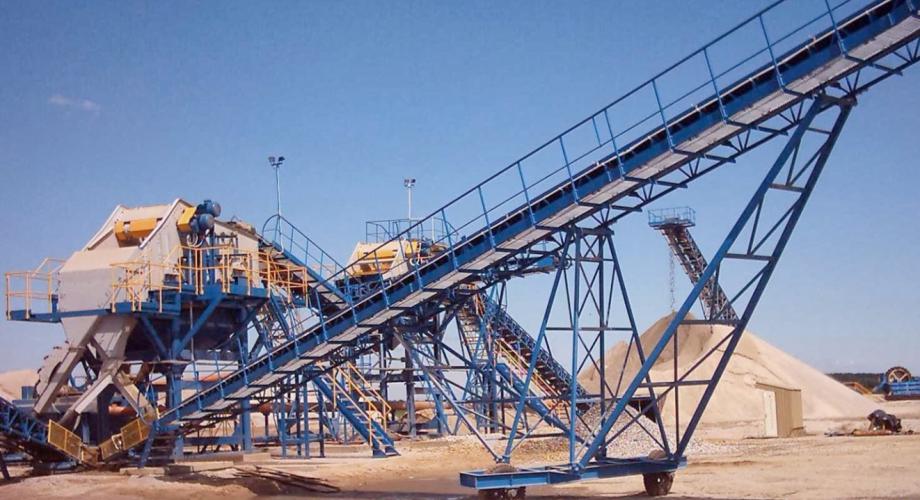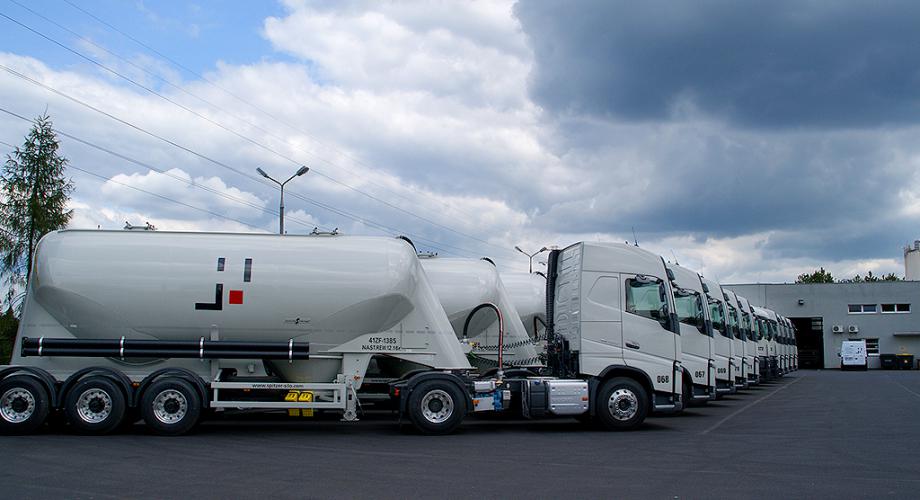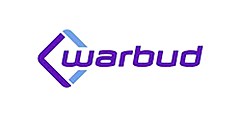Building materials
Cement
As part of the JD Group, the distribution of cement in Poland and abroad is handled by the JD company based in Opole. The company has signed distribution agreements with many cement plants both in Poland and abroad. The offer includes Portland, multicomponent and metallurgical cements, as well as stabilization binder.
read moreAll cements are manufactured in cement plants under the control of independent research institutes, and have the appropriate certificates allowing them to be used in construction. Read more »
JD offers bulk and bagged cement (with delivery to desired place or possibility receive with customer's transport methods). To meet customer requirements, the JD company systematically complements the range of products offered. In addition to cement, Company also offers well hydrated lime and autoclaved aerated concrete "M" and "D" blocks with class of 500, 600 and 700.
JD activities involves distribution of building materials to the customers, which are: institutional buyers, batching plants, building warehouses, manufacturers of adhesives and mortars, manufacturers of concrete goods and retail chains.
JD Company highly values the importance of long-term contracts and cooperation with customers. Therefore, delivery to our clients are carried out within 24 hours, with the highest quality of products and services.
Portland cements >
Portland clinker with addition of gypsum (bond time regulator) the Portland CEM I cement is obtained. It is characterized by high early and final durability (depending on strength classes) and high hydration heat which is not recommended when concreting very large elements.
It can be used for almost all cement exposure classes with the exception of: XA2 and XA3 where the HSR sulphate-resistant cements should be used.
- CEM I 32,5 R
- CEM I 42,5 R
- CEM I 52,5 R
Portland multicomponent cements >
The CEM II Portland multicomponent cements are obtained by grinding Portland clinker, gypsum and mineral additives.
These additives can be:
- granulated blast furnace slag – mark (S),
- siliceous dust – mark (D),
- natural pozzolan – mark (P),
- artificial pozzolan – mark (Q),
- siliceous fly ash – mark (V),
- lime ash – mark (W),
- burnt slate – mark (T),
- limestone – mark (L).
Content of mineral supplements in the CEM II cements can be between 6 and 35%. Depending on the maximum quantity of additives, two varieties of the CEM II multicomponent Portland cements can be singled out
variety A – the total amount of mineral additives is between 6 and 20%,
variety B – the total amount of mineral additives is between 21 and 35%.
- CEM II/A-LL 32,5 R
- CEM II/A-LL 42,5 N
- CEM II/A-LL 42,5 R
- CEM II/A-M (S-LL) 52,5 N
- CEM II/A-S 42,5 R
- CEM II/A-S 52,5 N
- CEM II/A-V 42,5 R
- CEM II/B-M (S-LL) 42,5 R-AZ
- CEM II/B-M (V-LL) 32,5 R
- CEM II/B-S 32,5 R
- CEM II/B-S 32,5 R-NA
- CEM II/B-S 42,5 N
- CEM II/B-S 42,5 N-NA
- CEM II/B-S 42,5 R
- CEM II/B-V 32,5 R
- CEM II/B-V 42,5 N
Metallurgical cements >
In case of addition of blast furnace slag in amount above 35%, the CEM III metallurgical cements are obtained. They are manufactured in two varieties, depending on maximum content of blast furnace slag added:
- CEM III/A is a blast furnace cement with content of slag between 36 and 65%.
- CEM III/B is blast furnace cement with content of slag between 66 and 80%.
Metallurgical cements are characterized by low hydration heat so that they are suitable for the construction of large concrete elements or hydraulic engineering facilities, bridges and roads. They can be used in concretes that are applied in foundations, basement walls, wall slots, water dams, marine objects or sewage treatment plants.
These low-alkaline cements have high sulfate resistance and are characterized by low permeability. They should not be used in winter period because of low level of hydration heat. They have very good dynamic of endurance growth in long hardening period – even to over a dozen months. They are manufactured in two endurance classes: 32,5 and 42,5.
ATTENTION!
Metallurgical cements as the only ones are manufactured in three varieties of early compressive strength: high (R), normal (N), low (L). Other types of cements are manufactured in two early compressive.
- CEM III/A 32,5 N-LH/HSR/NA
- CEM III/A 32,5 N-LH/NA
- CEM III/A 42,5 N
- CEM III/A 42,5 N - LH/HSR/NA
- CEM III/A 52,5 N - NA
- CEM III/B 32,5 N-LH/SR/NA
- CEM III/B 42,5L - LH/SR/NA
Special cements >
Cement with low hydration heat (LH) – it’s a cement with hydration heat below 270 J/g after 7 days of hydration (marked by heat of solution method). These elements includes: metallurgical cements CEM III and pozzolanic CEM IV with high content of slag and ash. They are used for big massive constructions. Low hydration heat allows you to avoid of micro-cracks and cracks that leads to reduction of concrete durability.
Cement with high sulfur resistance (HSR) – it’s a cement with high resistance on aggressive chemical environment. This cement is used in concretes qualified to following exposition classes: XA2 and XA3.
Low-alkaline cement (NA) is used when reaction alkali – reactive aggregate silica can occur. Nascent alkaline-silicone gel has tendency to increase of its volume (swell) under the influence of water and to demolish concrete structure. Reactivity symptoms can be white efflorescence, Surface scratches, funnel splashes and even complete destruction of concrete as result of its crushing. It means that in concretes that after incorporation will be exposed on damps necessary is use of low-alkaline cements. It concerns among others bridge and road constructions. To low-alkaline cements you can classify cement from CEM I to CEM IV that contains less than 0,6% of alkali.
Alumina cement – it’s quickly hardening hydraulic binder obtained from clay clinker made of limestone and bauxite. Alumina cement are characterized by very quick dynamic of initial endurance growth, however during hardening process it secretes a lot of heat. Because of that it can be used when concreting during winter period even with temperature of -10°C, however this binder is expensive.
White cement – it contains calcium silicates. White cement is used in process of manufacture of architectonic concrete and ornate concrete gallantry. It’s manufactured in all strength classes.
- CEM I 42,5 N-SR3/NA
- CEM I 42,5 R-SR 3
- CEM I 52,5 N (bs)
- CEM I 52,5 N-SR 3/NA
- CEM I 52,5 R (ft)
- CEM II/B-S 32,5 R-NA
- CEM II/B-S 42,5 N-NA
- CEM III/A 32,5 N-LH/HSR/NA
- CEM III/A 32,5 N-LH/NA
- CEM III/A 42,5 N - LH/HSR/NA
- CEM III/A 52,5 N - NA
- CEM III/B 32,5 N-LH/SR/NA
- CEM III/B 42,5L - LH/SR/NA
- CEM IV/B (V) 32,5 R - LH/NA
Bagged cement
Soil stabilisation binders
Hydraulic road binders are an excellent addition to our range of construction materials used in road construction, i.e. cement, ash and lime. Binders are primarily used for soil drainage and stabilisation.
read moreSoil stabilisation with hydraulic binders is a technology used in earth building for soil reinforcement, soil strengthening in embankment construction and in road construction. Sea more»
Soil stabilisation with lime is a good way to increase the speed of construction work by reducing the construction time and eliminating the need for soil replacement, especially when dealing with cohesive and blasted soil.
The most important advantages of using lime in the stabilisation process are: drainage of waterlogged soils, improved workability of cohesive soils, treatment of acid and humus soils, increased bearing capacity and improved compactability of the stabilised layer.
Cement binder >
- Hydraulic road binder class 12,5
- Hydraulic road binder class 22,5
- Hydraulic road binder class 32,5
Lime binder >
- Provical 90/10
- Provical 80/20
- Provical LB50
- Provical LB30C
- Provical LB30D
Lime >
- Provical ST
- Provical WR
Limestone meal
Limestone meal is obtained by drying and grinding limestone. It is used as a filler in concrete mixtures by ready-mix concrete producers and in prefabrication.
read moreLimestone meal is obtained by drying and grinding limestone. It is used as a filler in concrete mixtures by ready-mix concrete producers and in prefabrication. Sea more»
Lime meal is also used, among other things, as a filler in the production of building mortars and adhesives, in the manufacture of smoothing compounds, joint binders, and roofing felt.
- Fine-grained aggregate filler for concrete
Flay ash
Two companies in the JD Group deal with sale of attested fly ash for building industry. On domestic market distribution of attested fly ash is realized by JD company and in Germany it’s realized by JH Duda GmbH cwith headquarters in Bad Honnef.
read moreFly ash due to its features and low price in comparison with cement for many years is used in construction industry where it improves quality of manufactured products. Sea more»
The JD company deals with distribution of fly ashes from the Opole Power Station, above that it closely cooperates with Steag Energomineral. company. Steag distributes ashes form Ostrołeka Power Station, Łaziska Power Station, Zakłady Azotowe Puławy or from Zakłady Chemiczne Police. Fly ash offered by our companies is a product that meets requirements of applicable standards.
Benefits resulting from use of fly ash:
- concrete and concrete products, prefabrication, reduction of production material costs, optimization of cement quantity, increase of workability of concrete mix, increase of concrete tightness, binding of product final look
- cement – saving natural resources, reduction of cement water demand
- road construction – saving natural aggregates, significant cost reduction, optimization of cement quantity.
Microsilica
Microsilica – fine-grained dust derived from production of ferrosilicon and silicon. Silica fume consists of tiny, perfectly spherical particles. Thanks to these properties it fills space between cement particles and aggregates which has a positive effect on concrete: porosity, waterproof, swelling reduction and increase of durability.
read moreMicrosilica meets the requirements of European standard EN 13263. Read more »
Silica fume is available in two types:
- non-concentrated – with bulk density up to 350 kg/m3
- concentrated – with bulk density between 450-700 kg/m3
General information:
Appearance – very powdery amorphous dust – it can create bigger particles
Color - grey
SiO2 - min. 85 %
Application:
- Concrete production
- Cement production
- Production of refractory materials
- Fiber-cement materials
- Mortars, plasters
- Ceramic materials
- Warming and protection masses for metallurgy
- Rubber products
- Household chemicals
- Agriculture
Methods of material delivery:
- big bags with capacity of 300 – 1100 kg (depending on the type)
- ln bulk tanks (dry material)
Transportation
Road and rail transport
JD provides transportation services – road and railway carriage. The company operates in transport and shipping sector, both within Poland and abroad. Many years of company’s experience guarantee an attractive logistic offer, professional service and consulting, as well as punctuality of shipments. Effective logistic system in JD Group enables quick and smooth delivery to customers...
read more






